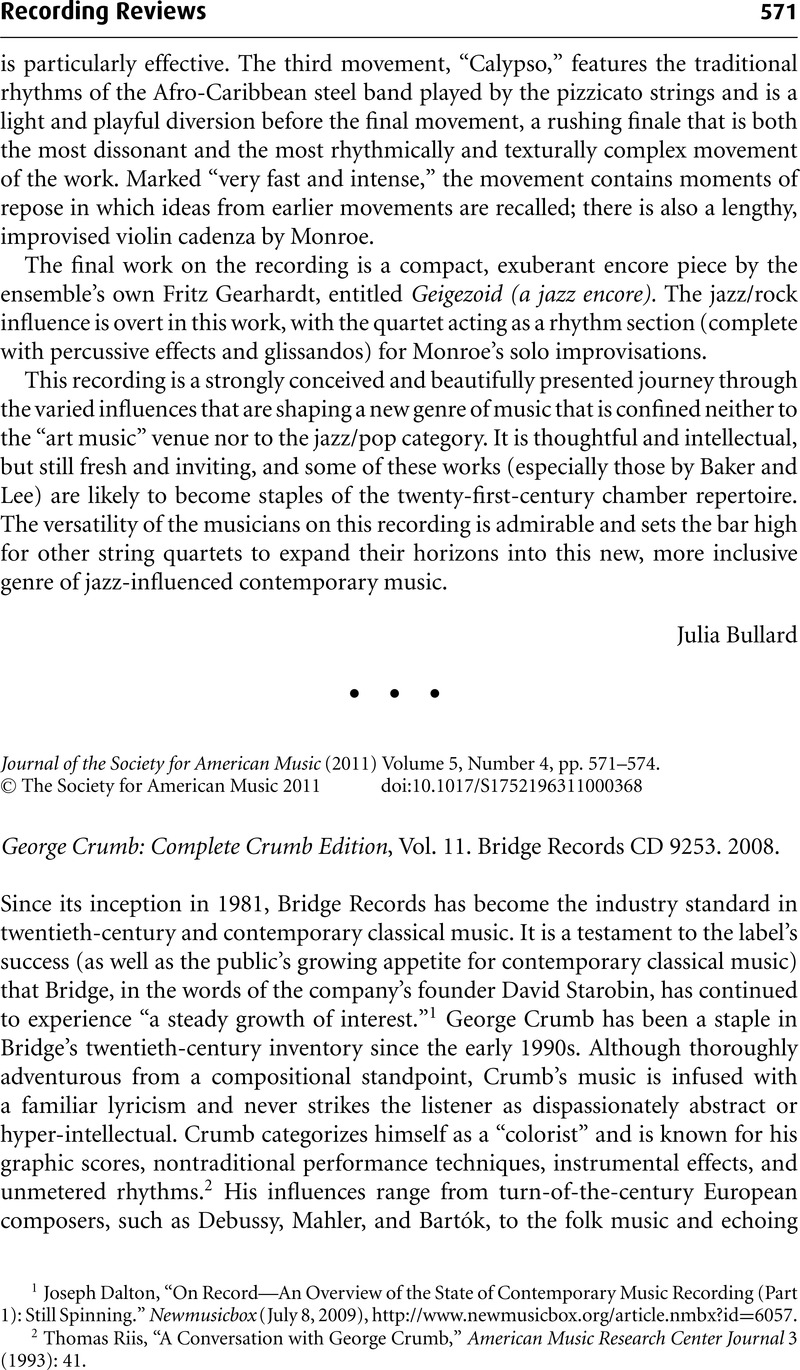No CrossRef data available.
Published online by Cambridge University Press: 24 October 2011

1 Joseph Dalton, “On Record—An Overview of the State of Contemporary Music Recording (Part 1): Still Spinning.” Newmusicbox (July 8, 2009), http://www.newmusicbox.org/article.nmbx?id=6057.
2 Riis, Thomas, “A Conversation with George Crumb,” American Music Research Center Journal 3 (1993): 41Google Scholar.
3 The Three Early Songs are the only “juvenilia” that Crumb revisited and eventually had published. He unearthed them at the request of Jan DeGaetani.
4 Shuffett, Robert, “Interview: Crumb/Shuffett,” in George Crumb: Profile of a Composer, ed. Gillespie, Don (New York: C. F. Peters, 1986), 35Google Scholar.
5 Tableaux, Book I is the subtitle of Zeitgeist, another piece for two pianos.
6 Crumb, George, Otherworldly Resonances for Two Amplified Pianos (New York: C. F. Peters, 2005)Google Scholar.
7 The premier performance of the earlier version of Otherworldly Resonances with Quattro Mani, for whom it was written, is featured on Bridge Records Compact Disc 9155.
8 The quotes are from Crumb's program notes. See Crumb, George, The Sleeper (New York: C. F. Peters, 1984)Google Scholar.
9 Multi-aggregate cycles are defined by Edward Gollin as “compound interval cycles that run through, or cover, the tones of more than one aggregate.” See Gollin, Edward, “Multi-aggregate Cycles and Multi-aggregate Serial Techniques in the Music of Béla Bartók,” Music Theory Spectrum 29/2 (2007): 143CrossRefGoogle Scholar.
10 From an interview with Anna Sale, “Outlook,” West Virginia Public Broadcasting (21 December 2007), http://www.youtube.com/watch?v=5xo8SHjTxpc.